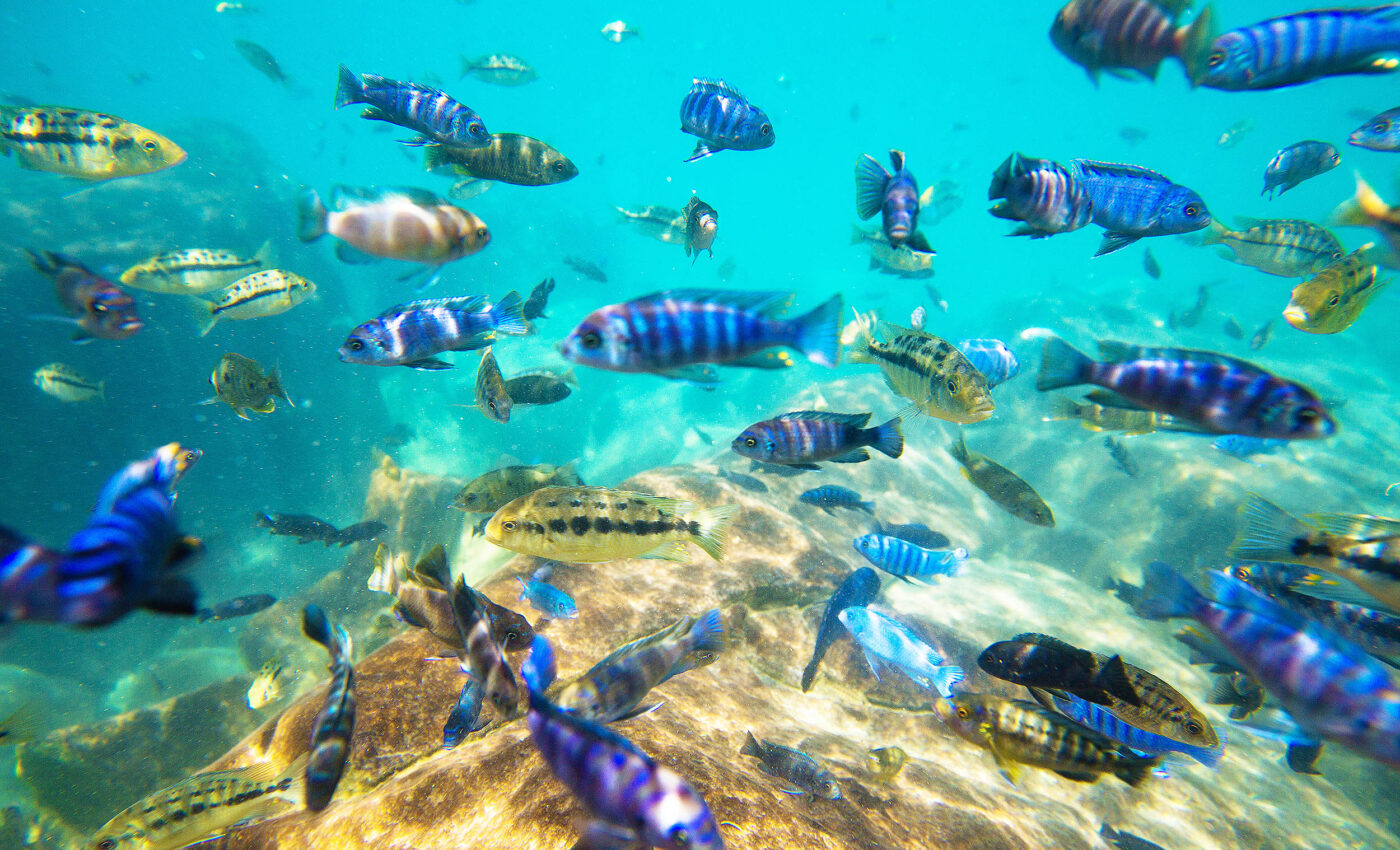
Some fish adapt to murky water by growing larger eyes
Variations in water quality significantly impact the visual system of African fish, particularly the Blue Lips cichlid. A new study reveals that fish raised in cloudy water develop larger eyes and pupils than those raised in clear water, regardless of their parents’ environment.
Role of age in cichlid water adaptation
The study, led by Jai Tiarks, a recent graduate in environment and natural resources at The Ohio State University, indicates that age plays a crucial role in how fish like blue lips cichlids adapt to new underwater conditions.
Published in the Journal of Experimental Biology, the research shows that younger fish have the ability to adapt their physiology to cope with murky water, while older fish lack this flexibility.
“Cichlids are known for filling a huge diversity of ecological niches and being able to adapt to changes in their environment,” Tiarks said. “That has driven a lot of interest from an evolutionary standpoint, especially for the timescale that this adaptation occurs.”
Clear vs. cloudy water
To explore how and when these adaptations occur, researchers conducted an experiment where they raised half of a brood of fish in clear water tanks and the other half in cloudy water tanks.
They measured the eye and pupil diameters of both young and adult cichlids, discovering that younger fish developed larger eye structures in response to cloudy waters.
“When the cichlids were young, they had this huge plasticity and were able to alter their physiology to cope with the turbid environmental conditions,” Tiarks explained. “But when we looked at the fish that were older, they didn’t have that same flexibility.”
Eye and brain size differences
The study also notes differences in eye and brain size patterns between young and old fish.
Initially, the team expected that fish reared in murky water would have larger brains, as bigger eyes would necessitate more brain capacity to process visual information.
However, digital photographs of their biological systems showed that older fish had relatively larger brains and optic lobes compared to their length and brain mass, unlike the younger fish.
This suggests that, like mammals, fish experience different sensory demands at various life stages.
Implications of murky water for cichlids
The issue of growing up in clear versus murky water is significant for the Blue Lips cichlids, especially given the changing ecosystems in their African habitat.
Deforestation is a leading cause of habitat destruction and increased water murkiness. When trees are cut down, the stability of the nearby soil is lost, causing sediment to deposit into aquatic systems.
“Anytime there’s a storm, all of that soil, sediment, and vegetation that was held in place by trees isn’t held in place anymore,” Tiarks said. “It all ends up in whatever body of water is nearest, and it’s a direct stressor to our field sites and the populations that live there.”
Environmental changes needed
This study suggests that as human-induced environmental change worsens, some animal populations, like the blue lips cichlids, may persist in less-than-ideal habitats.
For Tiarks, this offers a glimmer of hope that human impact on the environment isn’t as life-altering for all species as it might seem.
“We are causing and driving changes within these fishes’ systems,” Tiarks stated. “But holding on to examples of species that can actually cope with the changes happening around them is a good reminder of how powerful and flexible nature is.”
This research underscores the resilience of nature and the adaptability of certain species in the face of environmental challenges, providing valuable insights into evolutionary biology and conservation efforts.
Blue Lips cichlids and water adaptation
Blue Lips cichlids, scientifically known as Haplochromis sauvagei, are native to African lakes like Malawi, Tanganyika, and Victoria. These fish are popular in aquariums due to their vibrant colors and distinctive blue lips.
Habitat and behavior
They thrive in freshwater lakes with rocky substrates, preferring clear, oxygen-rich water. Their diet includes algae, plankton, small invertebrates, and detritus. In captivity, they eat pellets, flakes, and live or frozen foods.
Blue Lips cichlids are mouthbrooders; females carry fertilized eggs in their mouths until hatching, ensuring higher survival rates. They are territorial, especially during breeding, with males defending territories and displaying bright colors.
Conservation status
Habitat destruction, water pollution, and overfishing threaten these cichlids. Deforestation and agricultural runoff degrade their natural habitats.
Conservation efforts focus on habitat preservation, pollution control, sustainable fishing, and regulating the aquarium trade. Protected areas and environmental regulations are crucial for their survival.
The full study was published in the journal Journal of Experimental Biology.
—–
Like what you read? Subscribe to our newsletter for engaging articles, exclusive content, and the latest updates.
Check us out on EarthSnap, a free app brought to you by Eric Ralls and Earth.com.
—–













